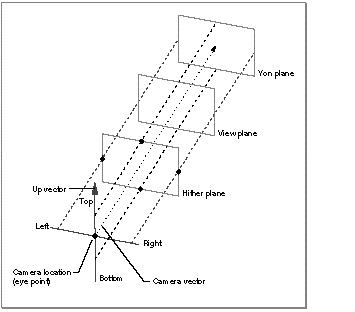
3D Graphics Programming with QuickDraw 3D 1.5.4
Previous | QD3D Book | Overview | Chapter Contents | Next |
Orthographic Cameras
An orthographic camera is a camera that uses parallel projection to generate a two-dimensional image of the objects in a three-dimensional model. In particular, an orthographic camera uses orthographic projection, in which the view plane is perpendicular to the viewing direction. Parallel projections are in general less realistic than perspective projections, but they have the advantage that parallel lines in a model remain parallel in the projection, and distances are not distorted by perspective foreshortening.
The two most common types of orthographic projection are isometric projection and elevation projection. An isometric projection is an orthographic projection in which the viewing direction makes equal angles with each of the three principal axes of an object. An elevation projection is an orthographic projection in which the view plane is perpendicular to one of the principal axes of the object being projected. Figure 8 shows isometric and elevation projections of an object.
Figure 8 Isometric and elevation projections

The view volume associated with an orthographic camera is determined by a box aligned with the viewing direction, as shown in Figure 9 . To specify the box, you provide the left side, top side, right side, and bottom side. The values you use to specify these sides are relative to the camera coordinate system defined by the camera location and the viewing direction. The box defines the four horizontal and vertical clipping planes.
See "Orthographic Camera Data Structure" for details on the data you need to provide to define an orthographic camera. See "Managing Orthographic Cameras" for a description of the routines you can use to create and manipulate orthographic cameras.
Figure 9 An orthographic camera

© 1997 Apple Computer, Inc.
Previous | QD3D Book | Overview | Chapter Contents | Next |